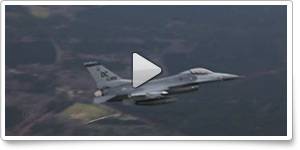| ||||||
| Accident Case Study: In too deep |
| |||||
| Click here for this week's custom content. | ||||||
FeaturedAccident Case Study: In too deep | |
GA NewsFreeFlight Systems ADS-B approved for CessnasFreeFlight Systems has gained FAA approval to install its Automatic Dependent Surveillance-Broadcast system in most Cessna single-engine aircraft including 152s, 172s, and 182s, the company announced Dec. 18. Read more >> Business aircraft activity down in NovemberA “robust” October 2012 for business aircraft activity was followed by a 6.3-percent decrease in November, said specialized aviation services company Argus International. Read more >> Diamond to offer auto landing in 2016GPS moving maps made navigation easier by requiring pilots only to keep an aircraft icon on a little pink line. After that pilots wanted a way to fly an approach automatically, and soon the glass cockpit systems were doing that. An automatic landing was next on the list. Diamond Aircraft CEO Christian Dries says he will offer that as an option in three years. Read more >> Flying clubs newsletter debutsThe AOPA Flying Club Network has published the first issue of its new monthly e-newsletter, Club Connector . AOPA’s research has shown that flying club leaders are hungry to learn more about the practical experiences of other clubs. So this e-newsletter will keep subscribers connected with useful news, information, and good ideas from flying clubs around the nation. It also will keep readers informed about AOPA’s Flying Clubs Initiative, a big part of the new Center to Advance the Pilot Community. Subscribe to the Club Connector. Air Force to modify Caravans for airdrop duty AOPA Legacy Society assures GA’s futureHere’s a good reason to act on the decision to make a long-term commitment to support general aviation: GA pilots are helping science improve the health of our planet. If that sounds over the top, let a research scientist who flies a kitbuilt twin on critical data-gathering missions help you decide. Read more >> 10 aircraft milestones from 2012A "flying car" flew, a storied aircraft went diesel, and manufacturers in Austria and Brazil celebrated first flights of new airplanes. A number of milestones distinguished 2012 for general aviation as manufacturers strove to bring new products to market. Take a look back at some of the aircraft-related news from the year. Read more >> NORAD prepares for Santa trackingThe North American Aerospace Defense Command ( NORAD) is starting its fifty-seventh year tracking Santa Claus for children around the world. The tradition began in 1955, when Sears misprinted a Christmas ad encouraging children to call Santa. The phone number was actually an operations hotline to a predecessor organization of NORAD. After receiving calls, Operations Director Col. Harry Shoup had his staff track the radar for Santa’s location and any child from then on who called the number was given an update. Since then, NORAD employees and friends have volunteered to answer phone calls and email from children worldwide on Santa’s location. Children can also track Santa via the Internet. Top 10 AOPA announcements of 2012Launches of a television-style webcast, free memberships for youth, and a network of flying clubs are among AOPA’s top announcements of 2012. Read more >> Helicopter tows ‘world’s largest aerial banner’ Plus One Flyers: ‘Premier flying club’ of SoCalThe flying club Plus One Flyers Inc., based in San Diego, averages 1,050 members and operates 60-plus aircraft out of four airports. For those considering forming a flying club, Plus One Flyers President Lawrence Massaro said the foundation for a successful enterprise is a business plan that is followed closely. Read more >> | |||||||||||||||||||||||||||||||||||||||||||||||||
Flight Instructor Refresher Clinics | Air Safety Institute Safety Seminars | |||||||||
For a complete schedule, see AOPA Online. Can’t make it in person? Sign up for the CFI Refresher Online. |
Topics vary—for details and a complete schedule, see AOPA Online. | |||||||||
ADVOCACY
Four things that didn’t happen in 2012
If you used GPS for navigation this year, you may be an unwitting beneficiary of efforts by AOPA and other aviation advocates to preserve your freedom to fly. Staff at AOPA work continuously to protect pilots from proposals that could detract from the utility and fun of general aviation—and to advance policies that will help pilots fly more, and with confidence. Read more >>
Denver’s new STARs showcase NextGen potential
New RNAV arrival procedures at Denver International Airport are benefiting from the efficiencies of performance-based navigation without curtailing general aviation’s access to the airspace or satellite airports. The modernization effort is an example of solutions made possible by the next generation of air traffic control technology, AOPA said. Read more >>
Join the Airport Support Network today
 Ensuring the health and vitality of your airport is up to you—incompatible development and economic and political pressures can restrict your flying. Every day, close to 2,500 Airport Support Network (ASN) volunteers work with AOPA headquarters to help save their airports, but we need more. Below is a link to a list of the airports where an ASN volunteer could make a difference.
Ensuring the health and vitality of your airport is up to you—incompatible development and economic and political pressures can restrict your flying. Every day, close to 2,500 Airport Support Network (ASN) volunteers work with AOPA headquarters to help save their airports, but we need more. Below is a link to a list of the airports where an ASN volunteer could make a difference.
To nominate yourself or an associate to be a volunteer, visit AOPA Online.
To learn more about the Airport Support Network, visit ASN Online.
 VFR: GA in New Zealand
VFR: GA in New Zealand
General aviation is the only way to get in and out of certain areas in New Zealand. The township of Milford is 73 miles, or one and a half hours by car, from the nearest town. A stretch of the road that connects the two often closes when the area experiences a lot of rain. Sometimes this road remains closed for several days at a time. Read more >>
Member Benefits
New Year’s ‘fly well’ resolutions
Most resolutions fade by Jan. 2, but getting healthy keeps you flying longer, so give it a shot. Dr. Jonathan M. Sackier looks at a few corollaries to benefit your health, inside and outside the cockpit. Read more >>
Flight planning info at your fingertips
AOPA members have free access to airport directory information, aviation weather, and flight planning with auto-routing capabilities on iPhone or Android smartphones with AOPA FlyQ Pocket, part of the association’s suite of mobile applications. Members with Windows Mobile or BlackBerry devices can access airport information with AOPA Airports apps powered by WingX. For powerful flight planning and electronic flight bag features on your iPad, check out AOPA FlyQ EFB.
Community
Picture PerfectAOPA’s online photo gallery allows you to upload your own aviation photography as well as view, rate, and comment on others’ photos. Your favorite aviation images from AOPA Pilot are still available online through this new gallery. Take a look, and submit your own photos! | | |
Engage in AviationCheck out user-submitted events from your region. To include an event or to search all events in the calendar, visit AOPA Online. AOPA does not endorse the events listed below, nor have ePilot editors edited the submissions. AOPA assumes no responsibility for events listed.
| |
| |
QUIZ ME!Here’s a question asked by an AOPA member who contacted our aviation services staff through the AOPA Pilot Information Center. Test your knowledge.
Question: I saw the requirement for a customs decal for international flights. Where do I get one?
Answer: U.S. Customs and Border Protection requires individuals traveling internationally to purchase an annual user fee decal. CBP encourages all applicants to use the online process. For more information about international flying, visit AOPA’s online resource.
Got a question for our aviation services staff? The AOPA Pilot Information Center is a service available to all members as part of the annual dues. Call 800/USA-AOPA (800/872-2672), or email to [email protected]. |
| |
| |
| |
| | ||||
| ePilot Editor: | Contributors: | | Production Team: | Advertise in ePilot: |
| Member Tools: Send feedback | ePilot Archive © 2012 Aircraft Owners and Pilots Association | 421 Aviation Way Frederick, MD 21701 | Phone 800/USA-AOPA | Fax 301/695-2375 | ||||













